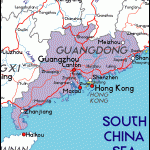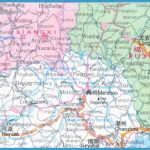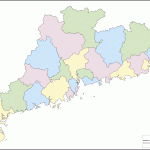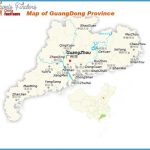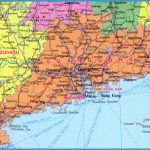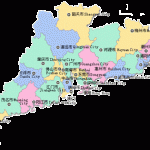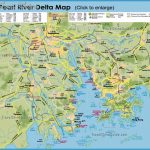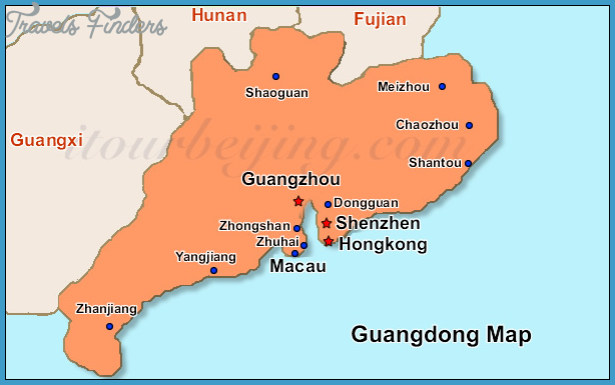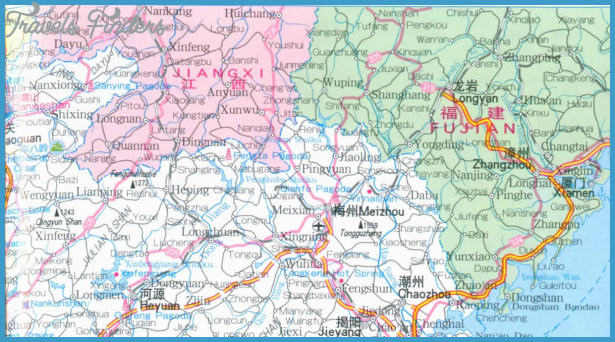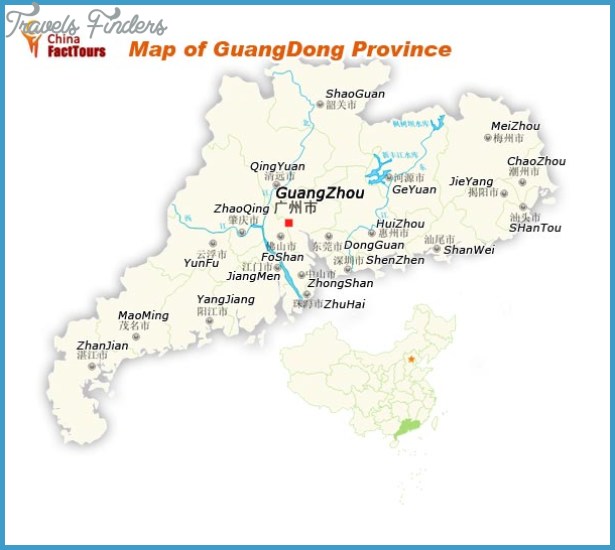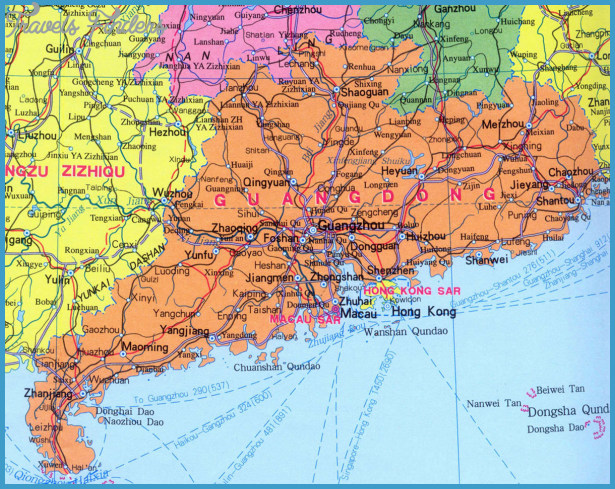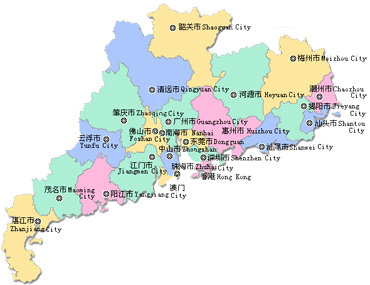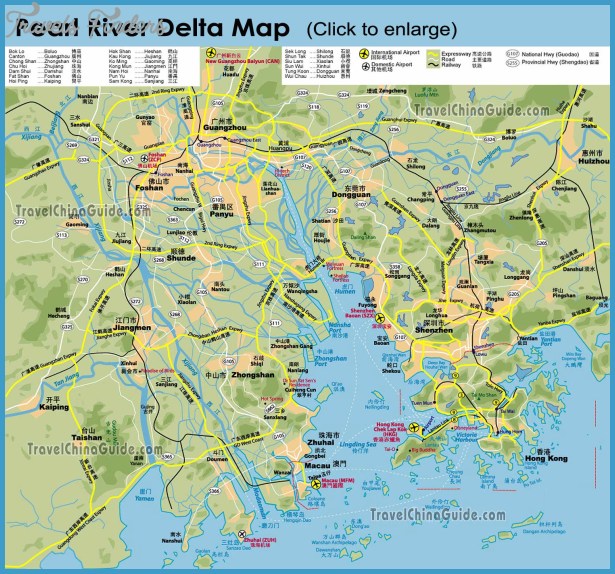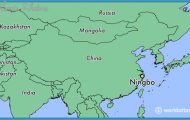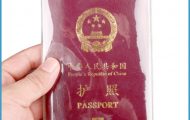Guangdong is distinguished by mountainous country, which in the north is separated from the Changjiang river valley by the 2000m/6600ft high Nan-ling Mountains, and by flatlands at the mouth of the Xijiang and on the Leizhou peninsula.
The monsoon climate is typical of tropical and subtropical areas of China. Temperatures often climb as high as40°C/104°F, and most of the rain falls during the summer months, when Guangdong is often struck by typhoons.
Under the Qin Emperor Shi Huangdi (reigned 221-210 B.C.), at a time when Guangdong was inhabited by minority peoples and not by the Han, some areas of the province became part of the Chinese Empire, which subsequently swallowed up the whole region during the Han period (206 b.c. to a.d. 220). As a result of its coastal situation foreign influences have been evident here ever since the Tang period (618-907), when a mosque was built in Canton. Trade with other countries developed considerably until the 12th c. At that time, and in the centuries which followed, many Han came to Guangdong. From the 16th c. onwards European influence began to be felt in Guangdong; in 1553 Macau became Portuguese, in 1841-42 Hong Kong was taken over by the British and in 1898 Canton came under French administration. Large numbers of people emigrated to south-east Asia and North America, and half of the Chinese overseas population hailed originally from Guangdong.
Guangdong is China’s richest province, and produces an eighth of the country’s total income. In 1992 it showed a growth rate of about 19%; local investment grew by 35% and almost one-half of overseas investments in China were made in the province. Its proximity to Hong Kong and Macau aided its economic growth.
Light industry (food and textiles) plays an important part, and mention should also be made of such heavy industryas metal-working, engineering and shipbuilding.
Only about 15% of the total area of the province is suitable for agricultural purposes. Two-thirds of the agricultural land is devoted to rice growing, and the climate means that two annual rice harvests are possible.
Fruit-growing – mainly bananas, mandarins, pineapples and lychees – is also of importance. Other agricultural products include sugar-cane, tea, tobacco and ground-nuts. Fishing in the South China Sea makes an important contribution to the economy.
In addition to the provincial capital Canton (see entry), Foshan, Zhaoqing, Shenzhen, Shantou, Zhanjiang and Zhuhai (see entries) are all of interest.


